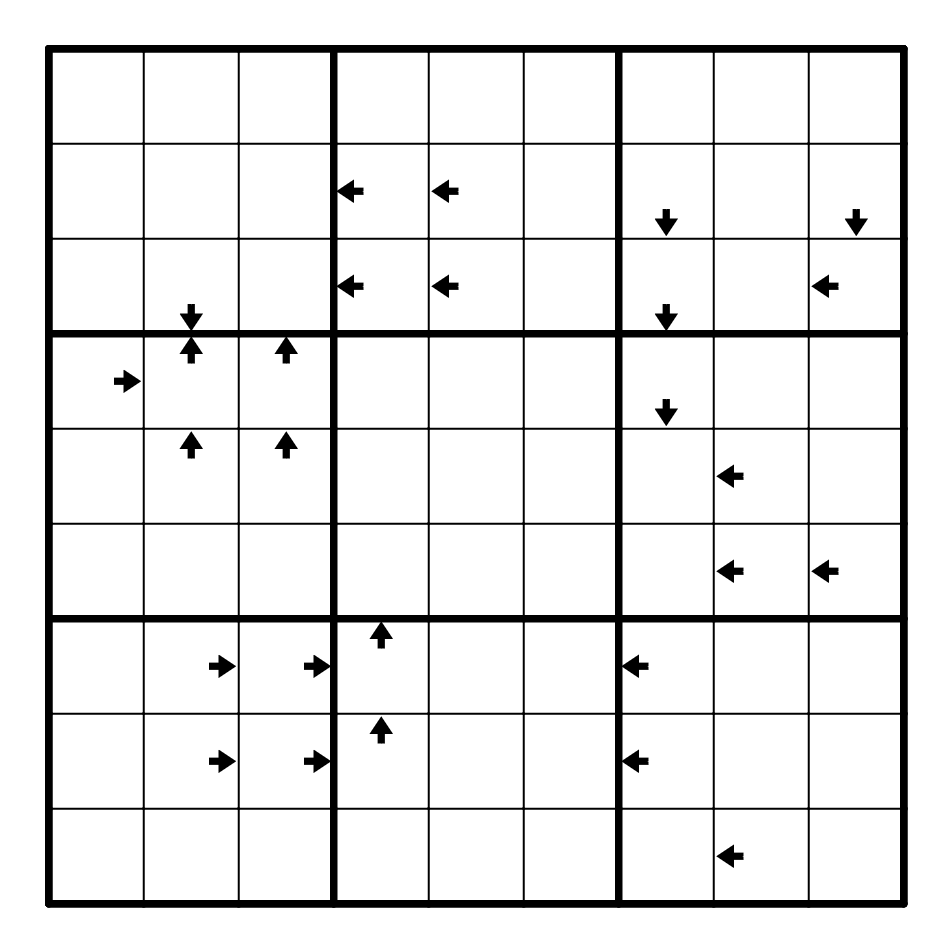Treasure Island
(Eingestellt am 29. Juni 2025, 18:20 Uhr von PhenixDe)
Normal sudoku rules apply: place the numbers 1-9 into the grid so they appear in each row, column and 3x3 box exactly once.
Each cell in the grid should be coloured either blue (for water) or green (for land).
Water cells form a single, orthogonally connected region in the grid.
No 2x2 area can contain only water cells.
An island is an orthogonally connected region of at least 3 land cells. Every land cell in the grid is part of an island.
Islands may touch diagonally.
The digit in a cell containing an arrow shows how many cells share the same colour with the cell in the given direction, not including the cell itself.
Cells pointed by an arrow are not necessarily next to each other.
Not every possible arrow is given.
Land cells forming an island must have different values.
On the biggest island, there is exactly one pair of orthogonaly adjacent digits that sum to 10.

The ruleset used in this puzzle has been invented by matt383.
Each cell in the grid should be coloured either blue (for water) or green (for land).
Water cells form a single, orthogonally connected region in the grid.
No 2x2 area can contain only water cells.
An island is an orthogonally connected region of at least 3 land cells. Every land cell in the grid is part of an island.
Islands may touch diagonally.
The digit in a cell containing an arrow shows how many cells share the same colour with the cell in the given direction, not including the cell itself.
Cells pointed by an arrow are not necessarily next to each other.
Not every possible arrow is given.
Land cells forming an island must have different values.
On the largest islet, a treasure was buried.
X marks the spot, of course, but no maps still remain.
X marks the spot, of course, but no maps still remain.
On the biggest island, there is exactly one pair of orthogonaly adjacent digits that sum to 10.
The ruleset used in this puzzle has been invented by matt383.
Lösungscode: Row 1
Gelöst von fathomless, wenchang, zeniko, ZornsLemon
Kommentare
am 30. Juni 2025, 16:03 Uhr von ryba
SudokuPad with no solution check - https://sudokupad.app/v4j2mz921g


